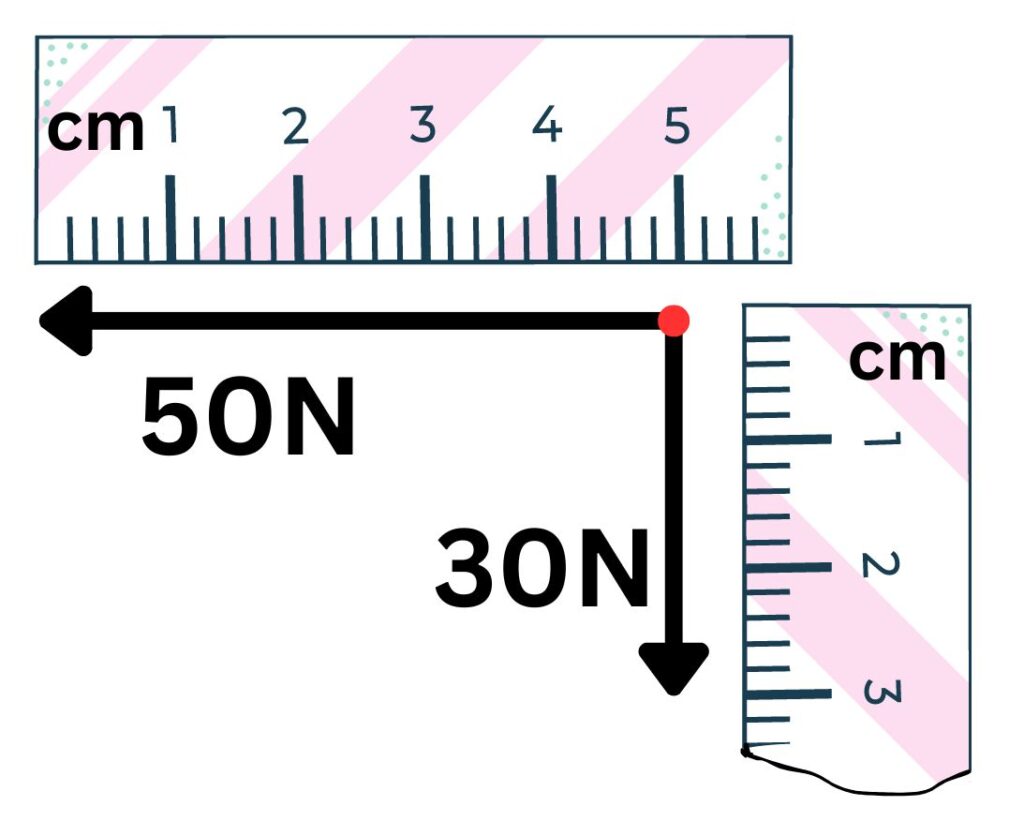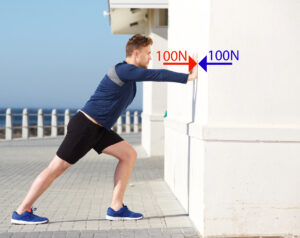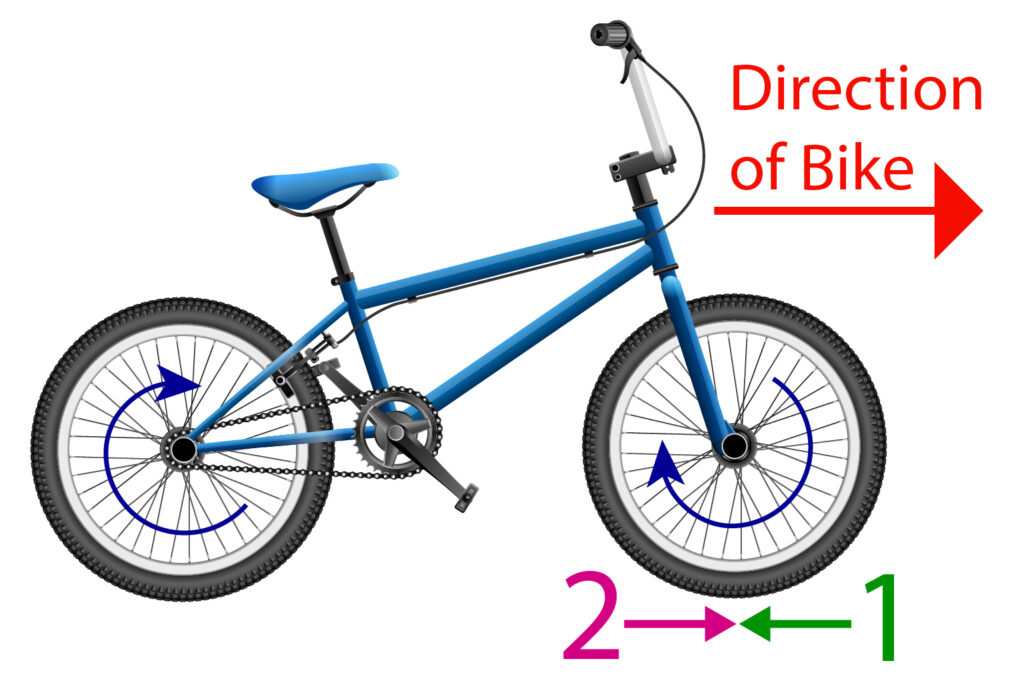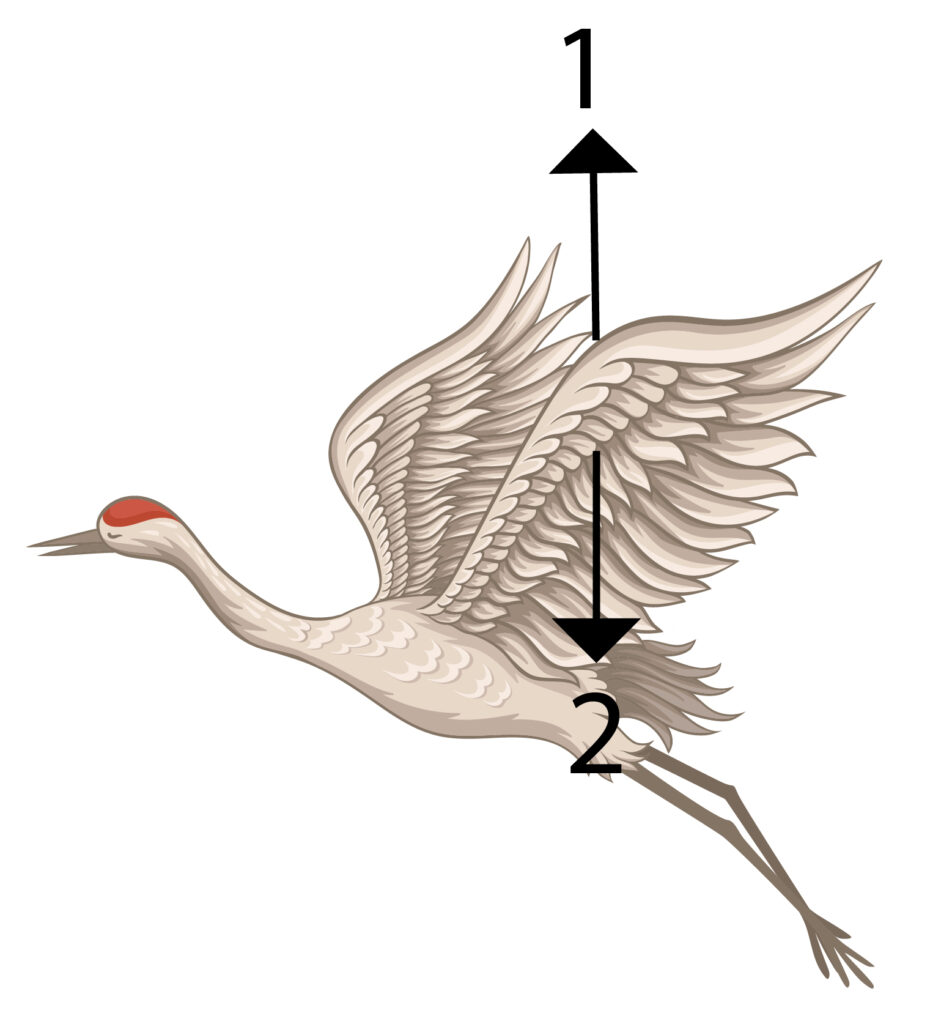GCSE Describing interactions of forces and objects
Vectors
A force is a vector quantity, so it has both a magnitude and direction.
An arrow can be used to represent the force on a piece of paper, the size of the arrow indictates the magnitude of the force and the direction of the arrow will show the direction of the force. See our more detailed revision notes on this under scalar and vector quantities.
Lets have a brief recap:

In this case there are two forces acting on the object that is represented by the red circle.
A downward force at bearing 180 degrees which is 30N and a force to the left at bearing 270 degrees which is 50N.
Remember that the force arrows should be drawn to scale. In this case, the scale is 1cm = 10N.
How pairs of objects interact to produce a force on each object.
Forces always exist in pairs, this is called a force pair.
Lets look at some examples:
Man pushing a wall.
 The man exerts a 100N force onto the wall, in response the wall exerts a 100N force back.
The man exerts a 100N force onto the wall, in response the wall exerts a 100N force back.
The man pushing the wall is an action force.
The wall exerting a force back is an example of a reaction force.
Both forces are equal in size, but opposite in direction.
Moving Bicycle

The bike is moving forwards, with the wheels turning clockwise.
Force 1 is the force of the bike tyre on the road, which pushes backwards.
Force 2 is the force of the road on the tyre, which pushes the bike forwards.
In this case, force 1 is the action force and force 2 is the reaction force.
Both forces are equal in size, but opposite in direction.
Any idea why the bike accelerates forwards, but both forces are equal?
This is because the forces are equal in size, but act on different objects. Force 1 is the bike wheel exerting a backwards force on the ground, which cannot be moved. Force 2 is the ground exerting a forward force on the bike to propel the bike forwards.
Bird Flying

Force 1 is the action force, which pushes the air downwards
Force 2 is the reaction force which is the air pushing upwards on the bird.
These forces are equal in size, but opposite in direction
Newton’s 3rd law
Newton’s 3rd law states that for every action, there is an equal and opposite reaction.
All of above examples use Newton’s 3rd law, they all have an action force and a reaction force. Both forces are equal in size, but opposite in direction.
For Newton’s 3rd law to apply the forces (action and reaction) need to be on different objects.
Practice Questions
1. Draw a vector to show a force of 100N with a bearing of 090 degrees, using a scale of 1cm = 10N.
2. A football player kicks a ball with a force of 150N. State the size of the reaction force that the ball exerts on the player’s foot.
3. Explain how a rocket is able to take off in terms of action and reaction forces.
Absorption and Emission of EM Radiation
JJ Thomson and Plum pudding model
Ernest Rutherford and the Nuclear Model
Niels Bohr changing the Nuclear Model
Discovering the Proton and Neutron
Measuring radiation from radioactivity
Radiation types and properties
Random nature of radioactive decay
Radioactive contamination or irradiation
Hazards of contamination and irradiation
Studies on the effects of radiation on humans
Different half lives of radioactive isotopes
Nuclear Fission Chain Reaction
Writing nuclear fission equations